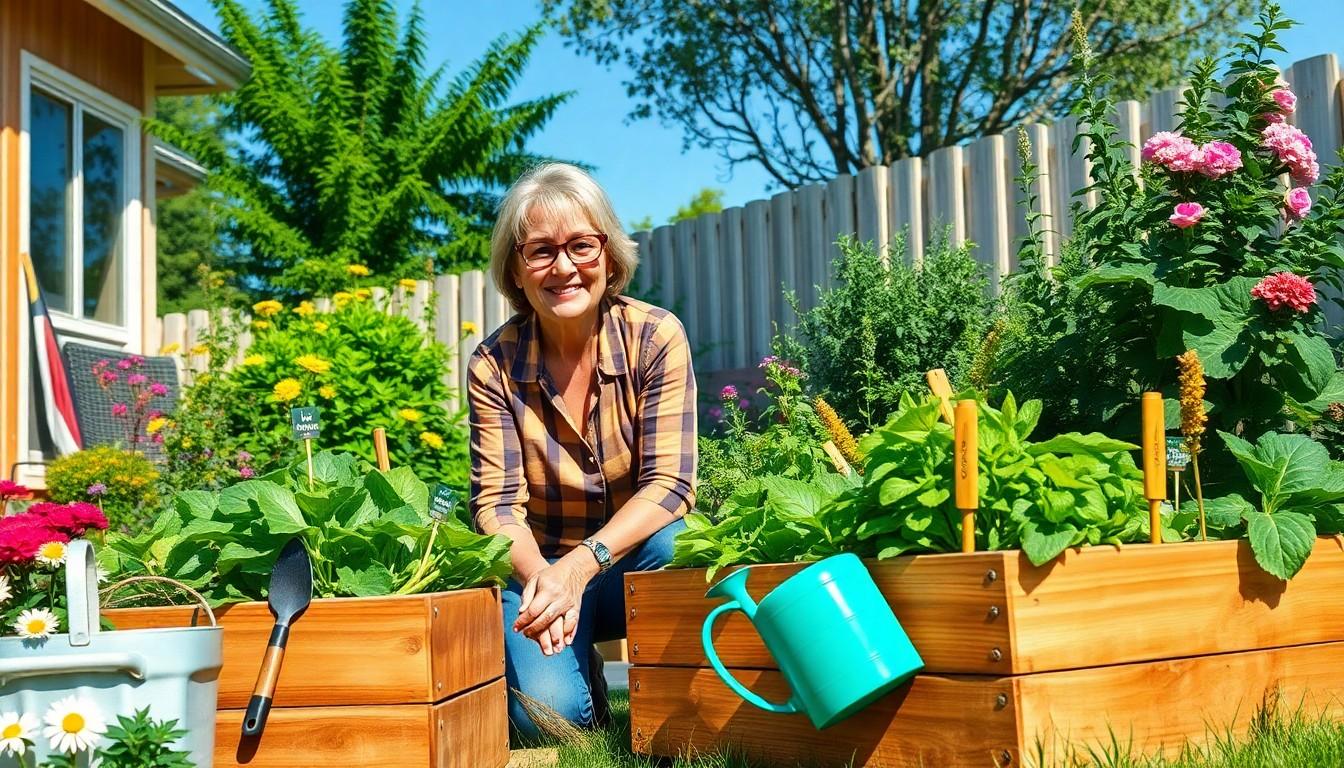The Best Fluffy Pancakes recipe you will fall in love with. Full of tips and tricks to help you make the best pancakes.

Raised Vegetable Garden Bed Ideas: Transform Your Backyard with These Creative Designs
Imagine stepping into your backyard and being greeted by a vibrant, thriving vegetable garden that practically begs you to come and pick dinner. Raised vegetable garden beds are the secret weapon for gardeners looking to elevate their planting game. They not only add aesthetic appeal but also make gardening easier on the back and knees. Plus, they can be a conversation starter—because who wouldn’t want to chat about their homegrown tomatoes?
Whether you’re a seasoned green thumb or just starting out, the possibilities for raised garden beds are endless. From whimsical designs to practical layouts, there’s something for everyone. So grab your gardening gloves and let’s dig into some creative raised vegetable garden bed ideas that will transform your outdoor space into a deliciously productive paradise. Who knew growing your own food could be this fun?
Benefits Of Raised Vegetable Garden Beds
Raised vegetable garden beds provide significant advantages for gardeners. They enhance plant growth while simplifying maintenance tasks.
Improved Soil Quality
Soil in raised beds benefits from better aeration. Enhanced drainage helps prevent soil compaction, allowing roots to grow more freely. Organic matter, such as compost, retains moisture and nutrients, fostering healthier plants. Gardeners control the soil mix, ensuring optimal pH and fertility levels. Nutrient-rich soil often leads to higher yields and more flavorful vegetables. They can also introduce beneficial organisms that enhance soil health.
Better Drainage
Raised beds offer superior drainage compared to traditional gardens. Excess moisture drains away quickly, reducing waterlogging risks that harm plant roots. During heavy rainfall, the raised design minimizes erosion and runoff. Plants thrive in well-draining conditions, preventing diseases linked to stagnant water. The structure allows for consistent watering practices, as gardeners can easily adjust water levels. Improved drainage ultimately supports robust root systems, leading to healthier, more productive crops.
Design Ideas For Raised Vegetable Garden Beds

Designing raised vegetable garden beds offers countless possibilities for creativity and function. Gardeners can choose materials and shapes that best suit their space and enhance their gardening experience.
Material Options
Wood remains a popular choice for its natural aesthetics and ease of use. Cedar offers durability and resistance against rot, while untreated pine is more affordable and readily available. For a modern touch, metal beds made from steel or aluminum provide longevity and a sleek appearance. Reclaimed materials often add character and promote sustainability, making them an appealing option. Concrete blocks can create sturdy, customizable beds, suitable for various landscapes. Each material choice impacts the overall look and functionality of the garden bed.
Shapes And Sizes
Rectangular beds are classic and versatile, perfect for organized layouts. Square shapes create a sense of symmetry, fitting well in smaller spaces. Circular or oval designs add visual interest, making gardens stand out. Vertical gardens maximize limited areas by utilizing tiered structures. Consider customizing height to accommodate different plants and improve accessibility. Smaller beds work well for herbs and companion planting, while larger ones support diverse crops. Each shape and size enhances the aesthetic while optimizing productivity in the garden.
Planting Techniques For Raised Vegetable Garden Beds
Utilizing effective planting techniques enhances the success of raised vegetable garden beds. Two methods worth considering are companion planting and seasonal planting strategies.
Companion Planting
Companion planting involves cultivating specific plant species together to promote growth and deter pests. Certain combinations boost flavor and increase disease resistance. For example, tomatoes thrive alongside basil, which can enhance flavor and repel harmful insects. Similarly, planting carrots near onions may deter carrot flies. This approach not only maximizes space in raised beds but also improves overall plant health and yields.
Seasonal Planting Strategies
Seasonal planting strategies focus on timing for optimal crop growth. Succession planting allows gardeners to maximize space and extend harvest periods. Planting cool-season crops like lettuce or spinach in early spring followed by warm-season crops such as tomatoes or peppers in summer maximizes productivity. Utilizing season-appropriate crops ensures continuous growth and a varied harvest throughout the year. Additionally, staggered planting times help minimize plant stress and encourage robust development.
Maintenance Tips For Raised Vegetable Garden Beds
Maintaining raised vegetable garden beds is essential for optimal plant health and productivity. Regular attention ensures vibrant growth and minimizes issues.
Watering And Fertilization
Effective watering strategies boost plant health in raised beds. Drip irrigation or soaker hoses provide deep, consistent moisture while reducing water waste. During dry spells, check soil moisture regularly. Fertilization enhances nutrient availability; applying organic compost or balanced fertilizers every four to six weeks promotes healthy growth. Focus on slow-release options to nourish plants continuously.
Pest Control Solutions
Implementing pest control solutions protects raised vegetable garden beds from common threats. Using companion planting can deter pests naturally; for example, marigolds repel nematodes while luring beneficial insects. Regular monitoring enables early detection of infestations. Introducing beneficial insects like ladybugs supports a balanced ecosystem, keeping potential pests in check. Organic sprays, such as neem oil, offer effective interventions without harming beneficial insects.
Creative Additions To Enhance Raised Vegetable Garden Beds
Enhancing raised vegetable garden beds using creative methods transforms gardening experiences. Several options exist to maximize space and aesthetics effectively.
Vertical Gardening Options
Vertical gardening utilizes space efficiently, especially in smaller areas. Gardeners can install wall planters or trellises to support climbing plants like peas and cucumbers. Using stacked pots creates layers, allowing for diverse plant selections in limited space. Hanging planters also maximize vertical surfaces, offering creative displays of herbs and flowers. This approach not only optimizes space but also adds visual interest and accessibility to gardening tasks.
Decorative Elements
Incorporating decorative elements elevates the charm of raised vegetable garden beds. Decorative stones, colorful garden markers, and artistic borders enhance the garden’s overall appeal. Using vibrant plant choices along with ornamental grasses adds texture and color diversity. Garden art, like sculptures or wind chimes, brings personality and uniqueness to the space. Incorporating functional features, such as benches for relaxation or pathways for easy access, further enhances enjoyment while tending to the garden.
Conclusion
Raised vegetable garden beds offer a unique blend of functionality and beauty for any outdoor space. They not only simplify gardening tasks but also enhance the overall health and productivity of plants. By exploring various design ideas and planting techniques, gardeners can create a personalized oasis that reflects their style and meets their needs.
Incorporating elements like vertical gardening and creative decorations can further elevate the gardening experience. With the right approach and care, these raised beds can transform a backyard into a thriving vegetable garden, providing fresh produce and a rewarding hobby for years to come.
